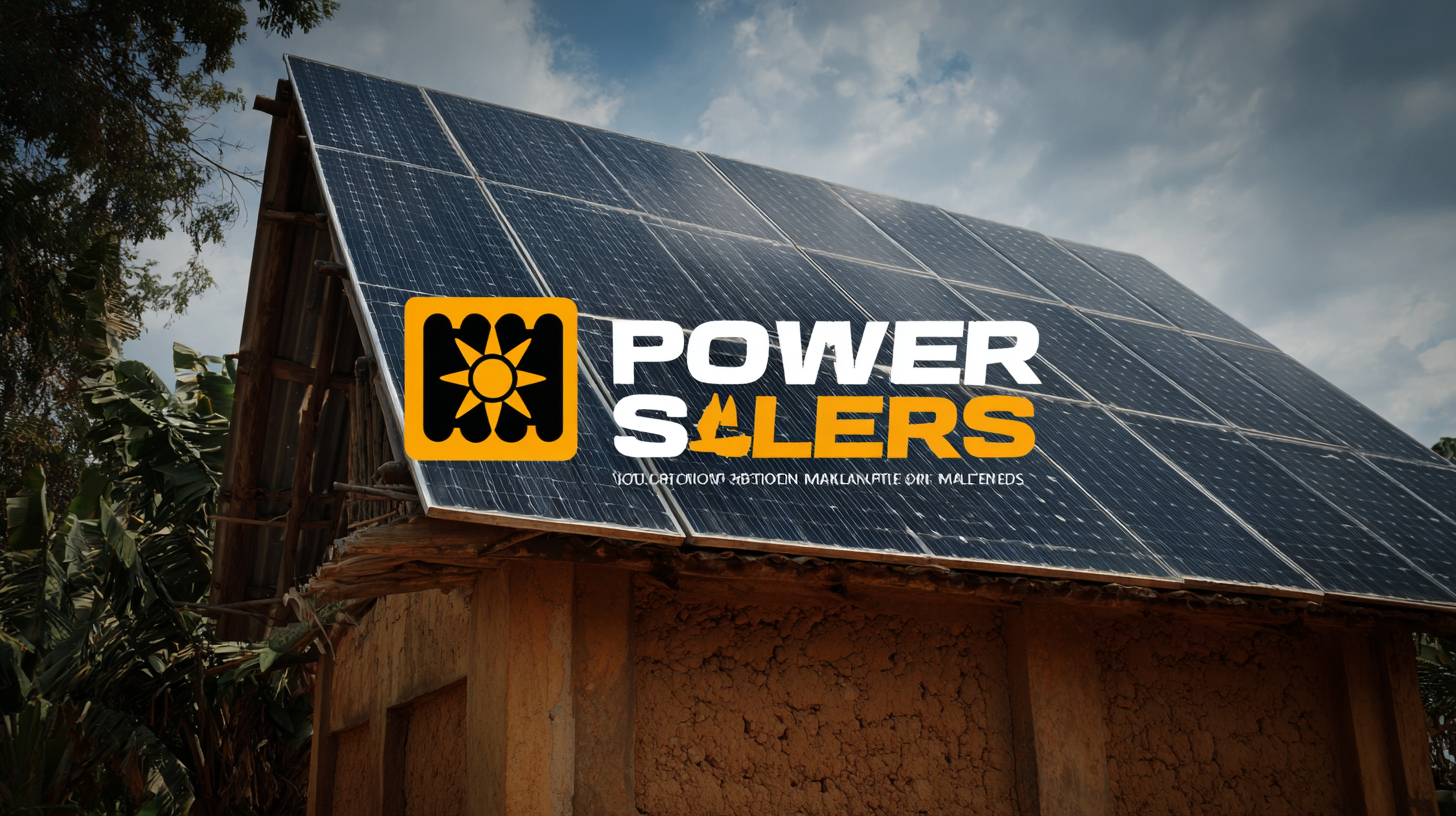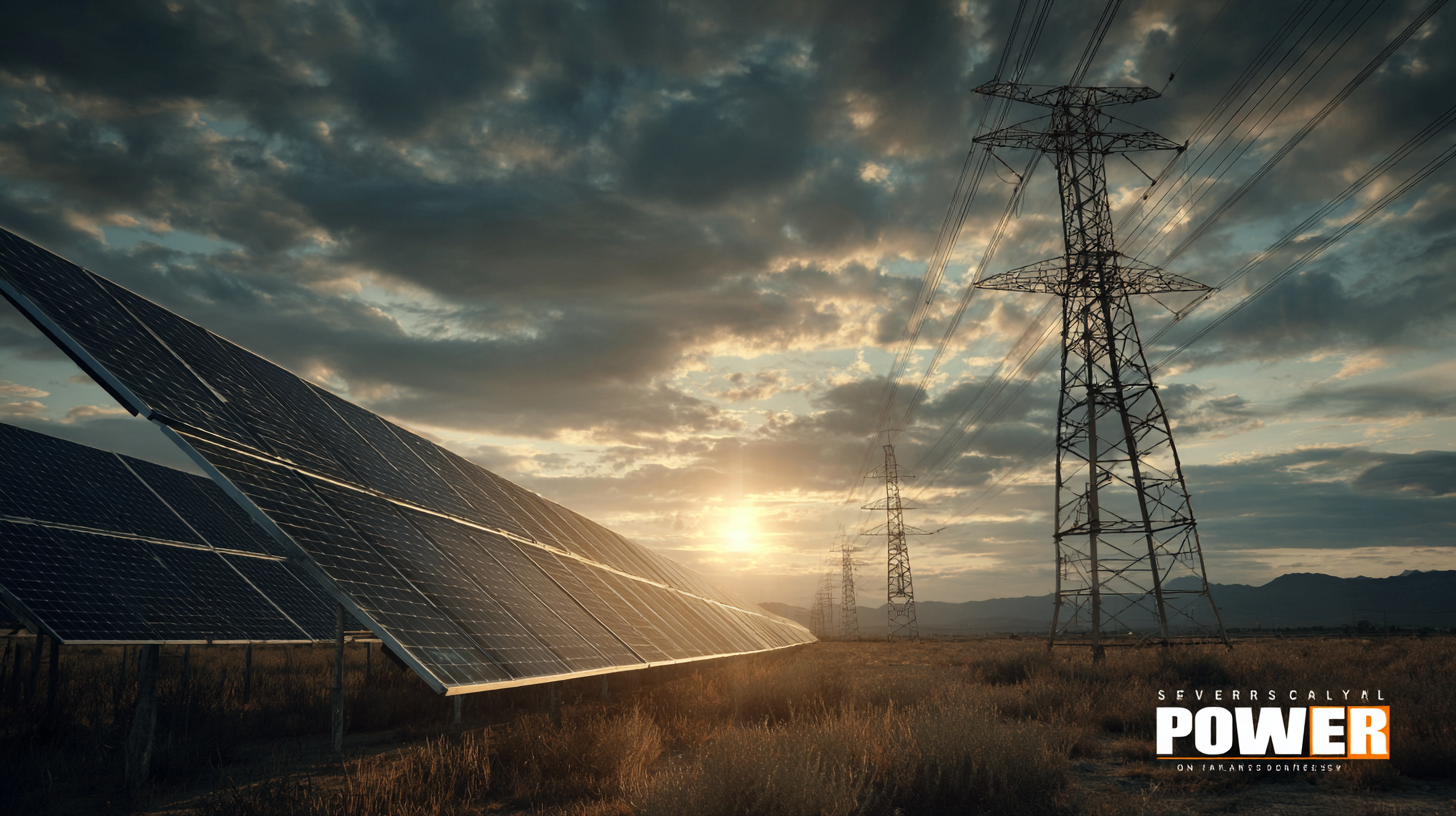Exploring Alternative Options for the Best Power Solar Panels in Global Markets
The global shift towards renewable energy sources has placed a spotlight on the importance of Power Solar Panels in achieving sustainable energy solutions. According to a report by the International Energy Agency (IEA), solar energy accounted for nearly 60% of the global renewable energy capacity additions in 2020, showcasing a remarkable growth rate. As demand for clean energy skyrockets, consumers and businesses alike are increasingly seeking the best Power Solar Panels that meet their needs while also maximizing efficiency and cost-effectiveness. This blog aims to explore alternative options available in global markets, highlighting trends, innovations, and tips for selecting top-performing solar panels. With rapid advancements in technology and competitive pricing, understanding the landscape of Power Solar Panels becomes crucial for making informed investment decisions that align with both environmental goals and financial benefits.

Understanding Different Types of Solar Panels Available in the Market
The solar panel market offers a diverse range of options for consumers, significantly impacting global energy strategies. Within the photovoltaic (PV) landscape, various panel types such as monocrystalline, polycrystalline, and thin-film panels are available, each catering to different applications. Notably, monocrystalline panels are known for their high efficiency and are increasingly favored for residential installations. In 2023, the market share of monocrystalline panels within the Chinese solar component industry was approximately 74.5%, underscoring their dominance in this sector.
The off-grid solar photovoltaic panel market is projected to see substantial growth, driven by rising demand in residential, agricultural, and industrial applications. Market research anticipates that by 2032, the off-grid solar PV market will expand significantly, bolstered by panel types favored in specific sectors, such as single-crystal panels for residential use and multi-crystal panels for larger commercial applications. As capacity requirements evolve, segments under 500 kW and between 500 kW to 1 MW will play crucial roles in catering to the energy needs of various end-users. This trend highlights a growing need for tailored solar solutions in a market that continues to innovate and expand rapidly.
Exploring Alternative Options for the Best Power Solar Panels in Global Markets
This chart illustrates the efficiency ratings of different types of solar panels available in the market. The data presents a comparison of monocrystalline, polycrystalline, and thin-film solar panels.
Comparing Efficiency Ratings of Leading Solar Panel Brands
When it comes to solar energy, efficiency ratings are a crucial determinant of a panel's performance. Leading solar panel brands have invested significantly in technology to enhance their efficiency, allowing homeowners and businesses alike to generate more energy from a smaller footprint. For instance, brands like SunPower and LG are renowned for their high-efficiency panels that often soar above 22%, setting benchmarks within the industry. These panels utilize advanced cell technologies, such as monocrystalline designs, that capture sunlight more effectively and convert it into electricity with less waste.
Comparing efficiency ratings across different brands helps consumers make informed choices based on their specific energy needs and available space. For example, Canadian Solar and JinkoSolar offer affordable options with efficiency ratings around 18-20%, which can be ideal for those who seek a balance between cost and performance. Additionally, newer entrants to the market are challenging traditional players by leveraging innovative manufacturing processes and materials, pushing the boundaries of what modern solar technology can achieve. By analyzing these ratings, potential buyers can find the perfect solar solution tailored to optimize their energy usage and reduce long-term costs.

Evaluating Cost-Effectiveness and Long-Term Benefits of Solar Investments
When evaluating the cost-effectiveness of solar investments, one must consider not only the initial expenditure but also the long-term benefits these systems provide. According to the International Renewable Energy Agency (IRENA), the global weighted-average cost of solar photovoltaics (PV) has fallen by 82% since 2010, making it one of the most affordable options for generating electricity. This significant drop in costs can lead to substantial savings for homeowners and businesses in the long run, often yielding return on investment (ROI) rates exceeding 20%.
**Tip:** Before investing, conduct a thorough energy audit to understand your power consumption needs. This will help pinpoint the most effective solar solution tailored to your requirements, maximizing both savings and efficiency.
Furthermore, long-term benefits of solar panels extend beyond energy savings; they also enhance property value and contribute to sustainability goals. A study from Zillow indicates that homes with solar energy systems sell for an average of 4.1% more than comparable homes without solar. As more consumers prioritize green energy, investments in solar panels can not only pay for themselves but also appreciate in value.
**Tip:** Leverage available incentives and rebates. Many governments offer financial programs designed to support solar installation, significantly lowering the total cost. Always check for local and federal tax credits that can further enhance your investment's attractiveness.
Identifying Eco-Friendly and Sustainable Solar Options
In the quest for sustainable energy solutions, eco-friendly solar panels have emerged as a crucial element in combating climate change. Traditional solar panels often have a significant environmental footprint due to the materials used in their production. However, innovative companies worldwide are now focusing on creating solar panels with minimal ecological impact, employing recyclable materials and sustainable manufacturing processes. By harnessing renewable resources, these eco-conscious options not only reduce waste but also promote a circular economy in the solar industry.

Navigating Incentives and Rebates for Solar Panel Purchases Globally
As the demand for solar energy continues to rise globally, navigating the myriad of incentives and rebates available for solar panel purchases is essential for consumers aiming to make sustainable investments. Various countries offer financial programs to encourage solar adoption, including tax credits, grants, and feed-in tariffs. These incentives can significantly reduce the upfront cost of solar installations, making it more accessible for homeowners and businesses alike. Understanding the specifics of each region's offerings is crucial for maximizing potential savings while transitioning to a cleaner energy source.
In many parts of Europe, for instance, governments are implementing generous rebate programs that allow consumers to recoup a significant percentage of their installation costs. Meanwhile, in the United States, various states provide tax credits that can lead to substantial savings, alongside net metering policies that enable solar users to sell excess energy back to the grid. As such, potential buyers should research their local and national programs meticulously, ensuring they reap the maximum benefits available in their jurisdiction. Ultimately, the financial landscape surrounding solar energy is not only encouraging sustainable practices but also promoting economic growth in green technologies.
